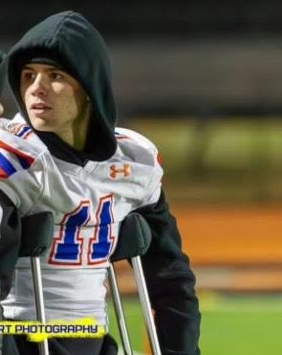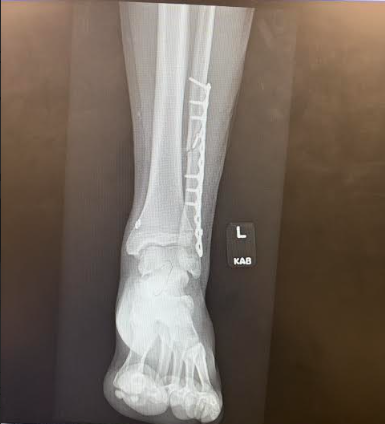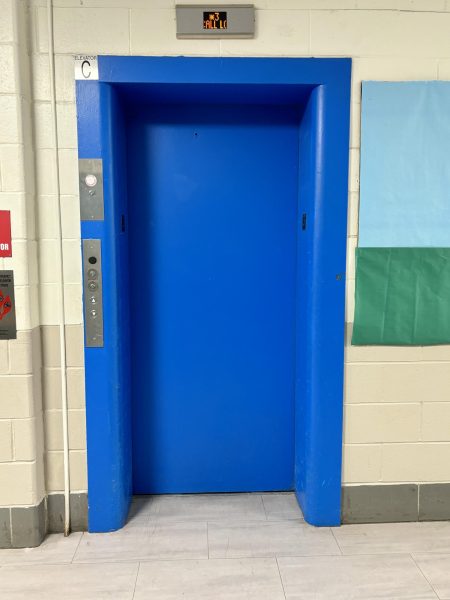4 thousand students, 6 minutes to pass from one side of Danbury Highschool to another is already a difficult task in itself, but with an injury, it is 10 times worse.

Quarterback Jake O’Keefe, who has been with the DHS football team for two years, suffered a severe leg injury during a game on November 1, 2024. O’Keefe was sprinting down the field when an opposing player fell directly onto one of his legs, causing it to become both broken and dislocated. O’Keefe Recalls, “I heard a snap and didn’t feel it in my leg. I looked around to see if anyone else was hurt until I realized it was me that was hurt.” At this moment, O’Keefe felt a sense of shock wash over him as he realized he was injured.

On November 1st, 2024, O’Keefe was sent in for surgery after dislocating and breaking leg and ankle. There, O’Keefe had a metal plate inserted into his leg. Before the surgery, O’Keefe “got a lot of shots” and didn’t “know what happened after.” Throughout O’Keefe’s injury, he was mainly sedated and didn’t feel much of anything until after he woke up as he recalls, “I remember waking up and feeling good.”
During the first 2 months of Okeefes’s injury, the doctors gave him crutches to help him move around from place to place, but moving around DHS with crutches wasn’t a simple task for Okeefe. Walking around DHS with a severe injury was like walking on nails; populated hallways, cramped spaces, and shortened time to get to class were already a struggle alone. In O’Keefe’s experience, he shares his frustration by stating, “It was annoying, sweating every time I had to go from one hallway across another with multiple people. With such cramped areas, it is easy to get pushed around the hallways and stairs without people being aware of what could happen to others. O’Keefe explains “It was tough walking with crutches in a school as big as DHS.” The experience forced Okeefe to adapt and become self-aware of his surroundings. O’Keefe also states, “Mentally I kept a good mindset and did everything I could mentally rather than physically,” he focused on being positive rather than focusing on his injury. He had to be extra careful while walking in a setting with many people.

Accessing the elevator key at DHS is one of the most difficult tasks for students who have been injured. Getting an elevator key is a time-consuming and challenging process. Students must first obtain a note from their doctor stating how long they need a key. After that, they need to go to the nurse’s office to obtain an elevator key form. The paperwork must be filled, signed, and returned with a $20 deposit. Students then take the documents to the main office, where they pay and turn in the

form. Even so, the school only gives out keys if they are available. If none are left, students receive a pass to show teachers and Safe Advocates, allowing them to use the elevator when necessary. Zuanirah Zafar shares her frustrating experience with trying to get the key, “I went through this lengthy process to get the elevator key, but at the end, they told me they didn’t have any available. Even though they gave me a pass, it was still difficult because it was not easy to locate a Safety Advocate to open the elevator. It felt like such a waste of time.”
Students like Zafar hope there is an easier way to obtain the elevator key and that the school has multiple copies available for those in need. Navigating an overcrowded school on crutches is already a challenge, and DHS’s large size and many stairs make getting around even more difficult for injured students. A more accessible system would ensure that those recovering from injuries don’t have to struggle just to move through their school day.






















